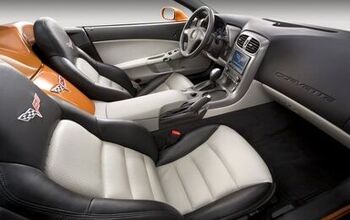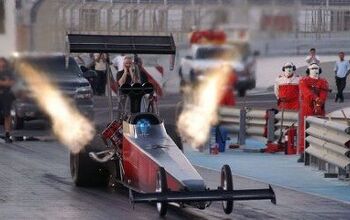Question of the Day: How Much Does Safety Matter?
Today is Friday so I'm keeping this one short. Reading through the Ask the B&B from earlier, I noticed that the person asking was leaning towards a Subaru Tribeca because it's safe. Yes, but it's also hideous!! For certain, one of the very ugliest cars made during an ugly time. I might opt for a lacerated spleen rather than be seen in one of those. I really might. And it's an SUV, too. As the reader was asking about a vehicle for her two kids, she's probably thinking that SUVs are safer. They aren't, as you're more likely to lose control and fall off a mountain in an SUV than a car. Sure, if you run head-on into a Brink's truck the larger bulk of the SUV will insulate you more than a car. But in a car you can proactively avoid the accident, rather than reactively absorbing the impact energy. And finally, just to kick it up a notch, have safety ratings ever influenced your purchases? Put another way, you like one car better than the other but the former gets four safety stars to the latter's five — what do you do?


































Comments
Join the conversation
I'm seriously considering buying a Miata, but the small size is a deterrent. I'm just not sure that having a roadster is worth the sacrifice in safety.
I still disagree, vigorously: edgett : It’s just a dangerous world out there, and the pretense of “safety” or “security” is just that. There is no "pretense" in automobile safety. The biggest issue has to do with the ability and the force thereof of your head hitting a hard surface, which is the main thing that might kill you. "Seat belts" help avoid that, tremendously. "Front air bags" help a substantial measure more. "Side and side curtain air bags" have added protection against hitting the side windows and pillars. There's no pretense at all in that these systems make a huge difference in whether you will be killed or survive in an accident. "High strength steel" reinforcement around the passenger compartment makes it far less likely to crush inward during an accident, as compared to non-reinforced vehicles. "Auxiliary" air bags, such as "knee" air bags, help protect parts of your body that have been comparably more exposed in previous vehicles. Yes, there is a certain point where the force of an impact might overwhelm these systems, but to proclaim them as a "pretense" is ridiculous. They are saving lives every day that would be lost in vehicles without them. And people are dying every day in vehicles that lack such systems. Again, by doing a little research, you can find and purchase vehicles with substantially better capabilities of protecting you in an impact -- and I simply recommend that doing so makes a whole lot of good sense.
I always wondered....has anyone ever done side impact tests with full face helmets on for small car drivers/passengers to see if that would save lifes in a t-bone side collision when side air bags are not available? I imagine a "free helmet!" promotion would not help small cars, however :)
hoots: The "pretense" I was citing wasn't to take away from the amazing strides we have made in enhancing vehicle safety. As much as I like many classic vehicles, I would drive one with the awareness that it doesn't offer the protection of today's cars. The point however is that even with the remarkable safety of today's vehicles, "safety" is relative and dependent upon the type of impact and the ability to avoid the impact. If I have to make a high speed evasive maneuver, a safe vehicle is one which has the capability to do so, and not a top-heavy SUV. If I'm going to get hit by something, there is no substitute for mass. Barrier tests are made on the assumption that I'm going to hit something, and do represent "safety" under a certain set of circumstances. Yet the vehicle's and the driver's ability to avoid the impact in the first place is not part of our "safety" lexicon. So safety in the real world is related to a wide variety of characteristics which vary based on the type of incident one is trying to avoid. Given equivalent crash standards (which assume that the crash will happen), the increased safety offered by one vehicle over another is largely illusory. The single most important safety component remains the driver, and the auto companies have little to offer in that regard. I do agree that research can identify vehicles which represent a reasonable compromise of crash survivability and crash avoidance characteristics. The marketing side of this equation has been to avoid such nuances; when do you see mainstream car companies advertising the "safety" of their braking systems? Only years after the introduction of computerized dynamic vehicle controls were they introduced on the vehicles which needed them most, the top heavy trucks and SUV's. For the driver who is sufficiently informed to do the research you suggest, safety is not a pretense. For most of those who are not well informed, the assumption that the biggest vehicle on the road is "safer" is just pretense. My larger point was that if we really gave a damn about reducing fatalities and injuries, we would start to understand how accidents are avoided and quit blaming the vehicles for the accidents. I've seen innumerable headlines in the last few years on SUV rollovers, with the accompanying article tut-tutting over the tragedy of the vehicle rolling over. Never mentioned is the responsibility of the driver, unless they are drunk, to know the limits of his vehicle so that they do not try to yank the thing back on the road and thus put it on its lid. It's just curious that we have no problem with public funding for crash tests, yet little patience for public funding of driver improvement.